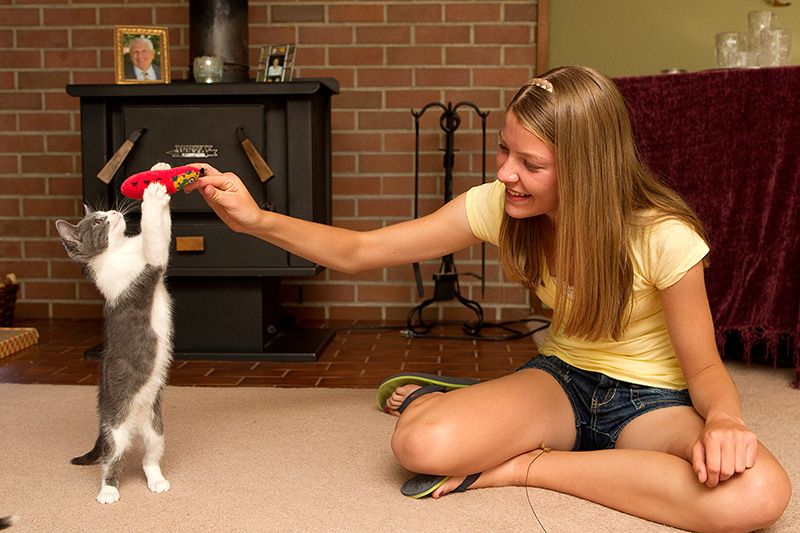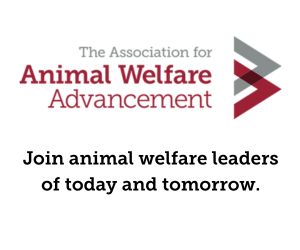Put your policy to the Adopters Welcome test
Develop your strategy for evaluating any adoption policy

Are you prepared for situations that aren’t included on the Adopters Welcome Adoption Policy Review worksheet? How can you tell whether your policy is truly necessary to protect pets, or not? This 6-step test will help.
Ms. Smith, who lives in a second floor apartment, wants to adopt Zippy, but your current policy requires all adopters have fenced-in yards.
Step 1: Identify the policy
Dogs will only be adopted into homes with fenced yards.
Step 2: Specify the goal of the policy and the intention behind it (what good thing is this policy intended to secure)?
This policy is intended to ensure that adopted dogs will never be hit by cars or become lost.
Step 3: Examine whether this policy achieves the goal 100% of the time, with no exceptions or conditions
Fencing only works if it is well constructed and maintained, if it is high and sturdy enough, if the dog is only in it for short periods of time, and if he has enough enrichment to keep him occupied the entire time he’s outdoors. The answer to this is actually “maybe."
Step 4: Examine the broader implications of saying "no." Could your policy actually undermine the goal?
- What effect will a denial have on the animal who could potentially be adopted?
While there is a slight chance that denying Zippy's adoption might save him from potential harm, chances are much greater that Zippy will miss out on bonding with a wonderful new adopter who will exercise him on a leash every day rather than leaving him alone for long periods of time. If you have a shelter, the longer Zippy stays with you the more likely he is to become ill or behaviorally unsound, and his chances of being euthanized drastically increase. Not to mention the resources (foster/kennel space, caretaker time, care costs, etc.) tied up in Zippy could have been used to help yet another at-risk animal.
- What effect will a denial have the potential adopter?
If Ms. Smith lives in an apartment, chances are she’s already aware that Zippy will need to be walked multiple times per day and that your community has a leash law. If she is already committed to adopting a pet, she will most certainly get a dog from another source if your organization denies the adoption, and it may be an unaltered, unvaccinated one at that. Ms. Smith will also likely spread the word about how ridiculous your “fenced yard only” policy is.
- What effect will a denial have your agency?
You'll still have the burden of caring for Zippy, who will prevent another animal in need from utilizing that space. Ms. Smith’s friends, neighbors and family will be influenced by her negative experience with your organization and that word will spread. Since negative perceptions can be hard to sway, you’ll likely have fewer adoptions and donations, fewer participants in your volunteer and foster programs, fewer participants at your events and fewer clients utilizing your services.
- What effect will a denial have your competition?
A “fenced yard only” policy will eliminate virtually everyone living in apartments. That’s too many people who will have no choice but to acquire their next dog from a breeder or pet store.
- What effect will a denial have your community?
Pets acquired from outside your agency are unlikely to go home fully vaccinated, spayed/neutered. They may contribute to the overpopulation problem in your community, and may also spread dangerous diseases. Ms. Smith’s negative experience is sure to damage not only your community’s opinion of your agency but all adoption agencies, furthering the divide between your community and animal welfare resources.
Step 5: Examine whether there’s a way to achieve the goal without having that policy in place
Plenty of great dog owners utilize leash-walking as primary form of exercise for their pet. Since you already have the benefit of leash laws in your community, talk with Ms. Smith about leash-walking and other forms of exercise she might use with Zippy.
Step 6: Examine your results
The "fenced yard only" policy does not completely achieve the goal of keeping dogs safely confined outdoors because it is fraught with potentially negative effects and its goals can be achieved by other means. In order to make sure you’re only using policies/procedures that are certain to meet useful goals and not create unnecessary barriers, this policy should be eliminated.
The Adopters Welcome approach is about finding, engaging and supporting more adopters. You’ll be much more successful in matchmaking if you communicate with your potential adopters. For every policy that comes into question moving forward, use this 6-step test. If your results show that the policy isn’t quite as fool-proof as you thought, chances are you can safely let it go or recreate it to be flexible, welcoming, and supportive.


